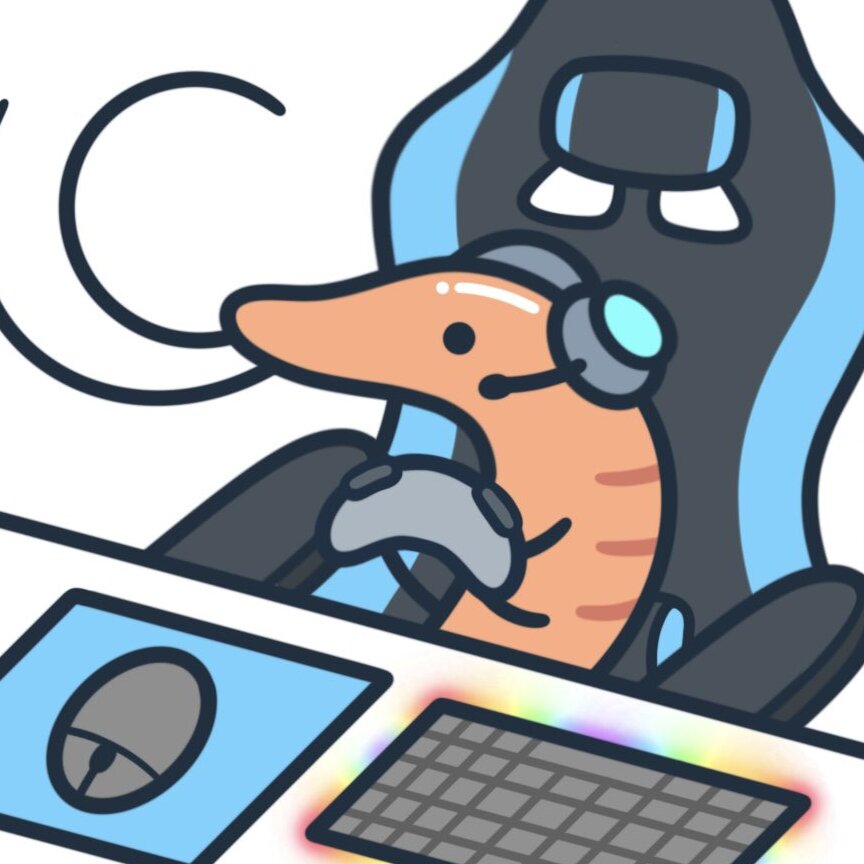Why switch?
I played with the idea of switching for quite a while. Having switched my daily driver from Windows maybe 6-9 Months ago I made many mistakes in the meantime.
Good and bad
This may have led to a diminshed experience with ubuntu but all in all, I was very pleased to see that Linux works as a daily driver. Still, I was unhappy with the kind of dumbed down gnome experience.
Problems
There were errors neither I nor people I asked could fix and the snap situation on ubuntu (just the fact that they’re proprietary, nothing else).
Installation
Installing debian (and kde) was easier and harder than I expected. The download mirror I used must not have been great although its very close to my location because it took ages although my internet connections is good.
Apps
Since I switched to Linux, I toned down my app diet a lot. Installing all my apps from ubuntu was as easy as writing a short list and going through discover. Later I added flatpak which gave me a couple apps not available through discover (such as fluffychat). The last two I copied directly as appimages.
Games
I was scared that the „old kernel“ of stable debian would be a problem. As it turns out, everthing works great so far, a lot better than on ubuntu which might or might not be my fault.
Instability
Kde does have some quirks that irritate me a bit like installing timeshift (because I tried network backups which dont work with it and the native backup solution does not seem to accept my sambashare) led to a window I could only close by rebooting.
Boot time
What does feel a bit odd is the boot process. After my bios splash, it shows „welcome to grub“ and then switches to the debian start menu for 3 seconds or so, then shows some terminal stuff and then starts kde splash and then login. This feels a lot longer than ubuntu did. Its probably easy to change in some config but its also something that should be obvious.
Summary
So far I‘m incredibly happy although I ran into initramfs already probably because of timeshift which I threw out again. I might do a manual backup if nothing else works. My games dont freeze or stutter which is nice. All apps I had on ubuntu now work on debian and no snaps at all.
TL;DR: If you feel adventurous, debian and kde are a pretty awesome mix and rid you of the proprietary ubuntu snap store. It also doesnt tell you that you can get security upgrades if you subscribe to ubuntu pro. Works the same if not better.

Ubuntu is a great gateway distro. When I dumped Windows back in the Windows 10 days, Ubuntu made it an easy transition, time elapsed and there were things that didn’t work right that I found frustrating. I eventually ended up trying out Fedora and the rest was history. I’m glad you found a good fit for you.

These days, Linux mint should be recommended for people coming from windows. I rate their desktop environment and intuitive style better and faster understandable for people coming from windows compared to ubuntu. If a person always wants the newest stuff recommend OpenSuse Tumbleweed now, since it a is rolling distro but very stable and you don’t have to use Terminal at all, there.

I can see why you would recommend it. For me though, it’s too close to the Windows UX. I try and make people break away from what they know in order to have the cleanest transition.

I just put the taskbar on left side now it looks more like ubuntu. I don’t see anything that makes mint look like windows except the “start menu” position. Its all GTK afterall

If you put it on the top, remove all app icons and add a second bar on the bottom that shows the apps and hides when you open a window in full screen mode, it even gets a macOS feeling out of the box without any addons.
I tried KDE, Gnome, xfce and experimented with tiling window managers. At the end of the day I’m always getting back to cinnamon. It just works for me and I love it 😍
I agree. It was a good gateway for me as well. We will see if debian is the end but so far it looks promising.
One thing I do find odd in my linux experience is that I find myself wanting to track down every last bug in my system (fruitless most likely). It has bothered me in ubuntu and now with debian I also want pretty much no warnings in my syslog if possible. We‘ll see if that works.

The fact that you report bugs you find makes you nothing short of a legend.
Thank you very much. This made me smile. Being kind to others makes you the same btw. :)

Many of my graphic applications spit out warnings on terminal about dbus not responding, because it never runs, neither do logind, but everything works for me. I don’t pay attention!

You could try Linux Mint Debian Edition (LMDE) it has timeshift installed in the live iso, useful to restore a system when it’s unbootable. Anyway it doesn’t come with KDE but Cinnamon or XFCE.
For me Debian or LMDE is good for a home server due to not continuous package update, just major security an important ones.
For a Deskop or laptop in my opinion Fedora KDE or Gnome is the best experience.

For me Debian or LMDE is good for a home server due to not continuous package update, just major security an important ones.
You can have a similar experience from a rolling release with debian !
Trixie (testing) or Sid (unstable) or backports !
Backports seems promising because that’s the version of the package going into the next debian release.

Don’t you mean Sid (unstable) ? :)

Edited !
Interesting! I have not tried fedora yet. I really like to be able to get some time off gnome for now though. Is there a particular difference between debian based distros and fedora? I cant really say I know them. The biggest differences I see make the desktop environments. Everything else, like package managers are also flexible.
Ubuntu is Debian anyway. Why not installing MX (based on Debian too) with XFCE, it is the best experience I have had.
I come from good old LFS from the 90s and for me, a distro is just a kernel with some GNU utils, a window manager, and a way to get packages (which is about the only diff between “distro”)
Makes sense. This is also what I deduced after installing arch in a vm. Its basically just a couple options. It would be awesome to have a distro where you can just mix and match all the things.

It would be awesome to have a distro where you can just mix and match all the things.
You may be interested in Bedrock Linux.
Thanks for mentioning it! I‘ll check it out!

Unfortunately Debian stable doesn’t ship our bugfix releases after the major Debian version gets tagged - KDE Plasma in Debian is currently at 5.27.5, and 5.27.10 was released upstream two months ago.
In other words, you’ll be experiencing bugs that have long been fixed… I’d advise to stay away from Debian for KDE Plasma because of that. If you want a Debian based distro with a good KDE Plasma experience, KUbuntu is likely a better choice, even with forced snaps. If you don’t need Debian though I’d recommend taking a look at Fedora KDE or Arch (derivatives).
Thanks for the heads up. I do get that faster updates mean a lot to some folks. There is always an argument for more up to date software but one needs to compromise sometimes. Using debian has been great so far and its working better than ubuntu (which might be a configuration issue). I’ll update if stuff starts breaking.

Man, I feel you. Sometimes you just want to get on with your life without babysitting the OS. Debian will stay out of your way and just work. Enjoy it!
Thanks for mentioning it. I‘m glad I‘m not the only one „using Linux“ instead of „living Linux“.

Please report back in a few weeks and a few months, and maybe even a year or two down the road.
Generally “I’m really (happy/upset/confused/sad) with it” after only a day isn’t really good feedback for people thinking of changing, but it does provide a good baseline to measure against once you’re more familiar with it, and getting glimpses into your learning curve might be really helpful for people looking for advice on which OS to go with.

I run Debian since 1998 and am happy.
I agree that normally, it isnt. But my post also was about the installation process and the changeover from one distro to the other. They were both very smooth. I was prepared for a lot more issues.
Generally yes, I will report back further down the line.

Next step: try Arch Linux
I did that, on a vm though. I learned a ton and would not want to miss the experience.
But arch is absolutely not something I would daily drive even if you paid me for it. It’s like driving a car which you have assembled from parts only. It works but you never know it it will start this morning.

Dude, I daily drive my Arch for a few years and it does not gave me any major issue until today
It’s a myth that Arch is not stable
If you don’t do anything crazy, it will be stable, exactly like any other distro
Sorry but you’re oot. People who switch to linux today are complete noobs compared to you and will do a ton of things you consider crazy.
The other distros will accept this or prevent it but arch wont even boot to the DE if you dont follow the wiki to the letter. I had to reaearch some stuff since I didnt get it from just the wiki and still got repeated freezes although I‘m a sysadmin for many years and have two linux servers (one of them for two years) which make no problems at all.
Arch is a pro distro, feel free to prove otherwise.

I agree that Arch is a pro distro. I do IT tech support, have background with Ubuntu, Mint, Debian, Knoppix, and Fedora and installing Arch was hard mode for me. Would I do it again? Hell yeah. Would I recommend it as a second or third install experience? Nope. Too many distros that are beginner to intermediate friendly. That said, I will forever have a fondness for pacman just because I like the name. I am still working out device drivers and a few smaller details a month later. Also, the wiki is written by someone who doesn’t do good technical writing. It assumes too much back end knowledge. I kept having to follow blog or article posts and still had to sandwich those snippets I got together hoping something worked…and again, I have some background knowledge of Linux already. An absolute beginner would be totally lost.
You put this a lot better than I could. Its exactly what my experience was as well.

Glad I am not alone, though I follow unixporn and other communities so was very familiar with the overall sentiments about Arch before diving in. I look forward to when I know a bit more about it. I put it on a laptop I specifically bought to install Linux alongside the existing windows install (LG Gram) so I knew I had nothing to lose and my whole intention was to learn. I would have never installed Arch on a machine I actually need to use at this point. I am lucky that I got as far as I did so quickly. lol.

I’m suggesting it to you, not to a completely noob. You know this caveats and probably will be fine
Anyway, use archinstall script. You don’t have to follow the wiki to the letter anymore.
I get that. But people will take „its a myth that arch is not stable“ out of context. It is absolutely not as stable as any other OS, at least if you use the wiki. I have not known about the script until recently.

Maybe if you don’t touch the AUR, or at least: if you’re really careful with it. But who could resist this tasty, tasty, unstable forbidden fruit of random software?

Yeah… AUR is what Arch community likes the most, but also what makes Arch unstable the most.
I don’t use AUR at all. I’m always on Flatpak…

@BaalInvoker @haui_lemmy
One just has to learn pacman, the package manager, or, better, some tool like yay, wrapping around pacman and offering an easy way to install packages not only from Arch’s repos, but from the AUR too; and to use some diff tools, like meld, to merge changes from new configuration files into those which they are actually using; and, for the rest, to read the ArchWiki; that way, i have had Arch running on my desktop pc since, like, 10 years ago. Only shame: systemd.

I am running an Arch based distro called Garuda, and it’s been perfectly fine for me.
Although I get that arch based distros can work great, they’re not arch, same as ubuntu is not debian.
But I‘m happy that you’re happy.

You are reproducing a myth started from Arch to keep newbs and those with learning disabilities out of the way. The 2nd largest distribution after debian didn’t survive this long if this myth had any truth to it.
I have provided ample reasoning for my conclusions. I find it very disturbing that you call this a myth. Are you saying I didnt experience what I did?

Installed Arch couple of weeks back and was surprised how easy it had become once I overcame the first hurdle of connecting to wifi from command line.
Only thing I’m not happy with is the font rendering in Firefox. Hard to say if it is Arch or Firefox.
Pretty sure its arch as other distros dont have that from my experience.

I have been happy with Pop!_OS but the idea of LMDE (Linux Mint Debian Edition) is very tempting.
I have not tried pop os yet. Whats the selling point again?

The biggest is the baked in support for nVidia GPUs, but their DE has a lot of work done to it for usability purposes. No real advances have been made over the past few years to really set it apart again, but there is a massive overhaul coming that will make it one of a kind again.
Sounds promising. I‘ll keep an eye out. Thanks for explaining.

To clarify, Cosmic desktop is not the default. It’s very much a WIP. Pop OS uses Gnome by default. They add some nice customizations to it too like tiling support and some enhanced power management options.
Pop OS is Ubuntu based, but they replace Snap with Flatpak, package a kernel as close to mainline as possible, and include Nvidia drivers (if you grab the Nvidia installer ISO).
I used Pop for a few years, loved it. Last I used it they still defaulted to Xorg instead of Wayland and that was a no go for me with an eGPU so I switched to Opensuse.

Keep an eye out for Cosmic Desktop release news.

LMDE is really great. Just migrated an old 2013 iMac to it today. Everything works out of the box. Everything easy like you can expect from Mint and stable like on Debian. Difficult not to love.
The only thing you have to like is Cinnamon.

(begging forgiveness, I haven’t read the comments yet).
Regarding backups - I started with using Ubuntu and its Backup application. This application is a front end for a command line package called Duplicity. One of the things that annoyed me about the backup app was that I couldn’t work out how to reschedule the scheduled backup.
Taking control of my own backup setup was the answer. Learn about bash scripting so you can create a short bit of code to handle your backups. Read up a little on duplicity, read up a little on mounting remote file shares, read up a little on setting up an ssh key for encrypting your backup.
This may be an heretical thing to say but I found ChatGPT quite useful in answering these questions (as always with anything you get from an LLM, double check it’s answers against reliable sources).
Thanks for mentioning this. I‘m actually scripting quite a couple of things in bash and some in python already. I had the exact same idea.
But one reason I wrote the post was because I wanted to share my experience with debian (and ubuntu) for users that are less experienced than I am.
I even have a custom made backup script for the 50 services I run on my two ubuntu servers. It is even self cleaning.
Also tried chatgpt but so far I didnt have any luck. The code it spat out (was for screen brightness control) didnt work. But I did get it to work in the end.

KDE is the default DE for Debian these days?
No, gnome is. But debian in opposition to ubuntu gives you a choice at install. You can use gnome, kde, cinnamon and a couple others which I forgot.

debian in opposition to ubuntu gives you a choice at install
That’s nice.
Indeed. It feels very mature and no nonsense like, all over. The only thing that bothers me a bit are some „qol things“ like being able to switch mirrors if you made a bad choice or to easily choose german keyboard while leaving the OS in english for easier troubleshooting online.
So the pattern here seems to be „debian shows that it is community made and you can help make it better in opposition to ubuntu which is commercial and your participation helps both the community and the company“

More mythology, ubuntu is just a layer of fluff over debian. Ubuntu wouldn’t exist if it wasn’t for debian. Just check your repositories. It is a fake distribution without character, mixing Free and non-free software from anywhere they can find them and promotes installing “foreign” pkgs to the system just to show they provide a wider variety.
Although I‘m not the biggest fan of ubuntu, I dont think the hate of linux distros is necessary.

If you could tell the difference between hate and criticism you wouldn’t wonder.
A fan? I wasn’t a fan of debian 7, I just thought 8 was garbage and left when 7 could no longer upgrade.
Nice to make it personal. Good bye.
- LassCalibur ( @LassCalibur@beehaw.org ) English3•1 year ago
Yeah the boot process is a mess! Debian’s noisy GRUB and unsightly boot text is an obvious and unnecessary paint point for a desktop user but very desirable for server installations. You do have some options though!
Carlo Contavalli apparently has a relatively simple work-around discussed at https://rabexc.org/posts/grub-shush. What I’ve done in the past is rebuilding Ubuntu’s source deb package for GRUB against my Debian system. You can grab it at https://packages.ubuntu.com/source/lunar/grub2. Build instructions can be found here https://unix.stackexchange.com/questions/117503/how-to-compile-a-debian-package-from-source.
The great thing about Debian, Linux, and FLOSS is that you can even automate downloading Debian’s source package when it gets updated, applying the silent patch, applying Ubuntu’s compilation options, compiling the deb, and installing the deb! But yeah why can some package maintainer not provide such as an option in the repository! It’s really an annoyance for many and almost makes me feel like I’m not the type of user the Debian community desires. Like, “Wait… what? You like pretty stuff? GTFO!” Maybe its even true? Hopefully you will enjoy using Debian! Its most preferable to Ubuntu in many ways these days!
Very interesting! Will save this. Thanks for mentioning it.
I think there are a lot of unsociable people in the linux community. I should know, I‘m autistic and also pathologically unsociable but even I am shocked at the amount of elitism and RTFMing that happens on a daily basis.
The difference I think is my self image is pretty ok and I dont need to be the greatest and most knowledgeable linux pro on the planet. Thats probably the only thing some folks have to their name.
But I digress. Have a great day.

I tried installing Debian recently as well but didn’t get too far into it. I was annoyed at the base configuration* though. I wasn’t able to use sudo, so I went to add myself to the sudo group and it told me the command didn’t exist… I looked it up and realised that
/usr/sbin* wasn’t on terminal path. Extremely fixable but something I never ran into on other distros, made me nervous how many other tweaks I may have to do.I was simultaneously testing Lubuntu and ended up sticking with that after following install instructions for another app kept complaining about bookworm errors. Perhaps the Debian version was too new?..
* Edited a couple of details to make them more accurate.
I suppose it depends on a lot of things. Errors are pretty common once you start installing a lot of apps in any distro imo. Especially unstable and sid are more up to date but as the name suggests less stable.

As far as I know I was on the stable version. I downloaded the one right on their front page, which was 12.4.0 net install.
Thats stable atm. No clue what it was back then. It took me a bit to add myself to the sudo group since sudo visudo doesn’t work. No idea what the use of that is.

The splash screen (boot screen instead of text)used to get me. It provided by an application called ‘Plymouth’.
You used to need to install it and configure grub, however I think if you go into ‘System Settings’ and type ‘Splash’ KDE has an option to install and choose the screen
Very interesting! Thanks for sharing that. Will probably read up a lot.


